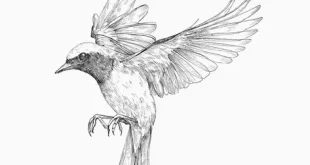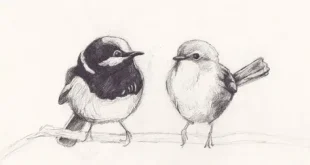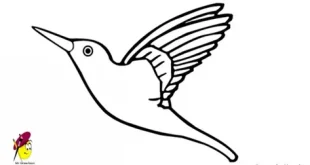Emus: Australia’s Gentle Runners of the Wild
The emu (Dromaius novaehollandiae), Australia’s largest native bird and the second-largest bird in the world after the ostrich, is an iconic symbol of the country’s wildlife. With their impressive height, flightless nature, and remarkable adaptability, emus fascinate researchers, nature lovers, and bird enthusiasts alike.
1. Distinctive Physical Features Beautiful Emu
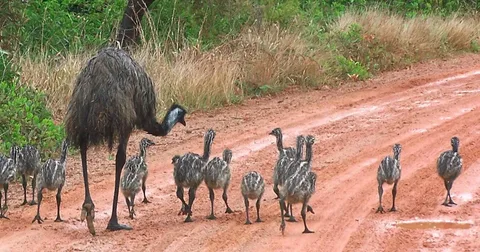
Their soft, shaggy brown and gray feathers act as natural insulation, helping them survive Australia’s extreme climates.
- Flightless structure – Emus have tiny wings only about 20 cm long, making flight impossible.
- Powerful legs – Their strong, muscular legs allow them to run up to 50 km/h (31 mph) to escape predators.
- Sharp beak and excellent vision – Perfectly adapted for browsing plants and spotting danger from afar.
- **to deter attackers like dingoes.
2. Habitat, Lifestyle, and Diet
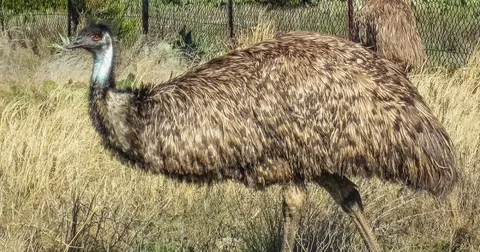
Emus are endemic to Australia and thrive in savannas, open woodlands, grasslands, and semi-arid deserts, while avoiding dense forests. They are highly nomadic travelers, often moving long distances to find food and water.
- Wide distribution – Found across most of Australia, from dry outback regions to coastal plains.
- Omnivorous diet – Emus feed on fruits, seeds, flowers, grasses, insects, caterpillars, and small reptiles.
- Seed dispersers – By consuming and spreading seeds through their droppings, emus support plant regeneration and biodiversity.
- Swimming skills – Surprisingly, emus are good swimmers and can cross rivers and streams when needed.
3. Beautiful Emu Breeding and Parenting Behavior

The breeding season occurs between May and August and is known for its remarkable parental role reversal:
- Survival sacrifice – During incubation, the male rarely eats or drinks, relying on stored body fat.
- Chick care – After hatching, the father protects and teaches the chicks for up to six months.
- Family structure – This paternal dedication makes emus unique among most bird species.
4. Cultural, Economic, and Ecological Importance
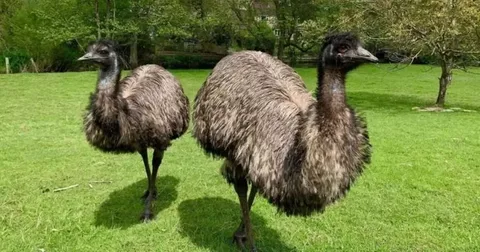
Emus are deeply connected to Australia’s culture, ecology, and economy:
- Cultural significance – In Aboriginal Dreamtime stories, emus symbolize endurance, survival, and adaptability.
- Ecological role – By spreading seeds, emus maintain biodiversity and support natural ecosystem balance.
- Commercial value – Emu farming provides meat, feathers, leather, and emu oil, which is prized for its anti-inflammatory and healing properties.
Graceful Appearance and Unique Traits of Emu Birds
The emu is admired within the USA for its tall height, graceful movement, and impressive physical features that attract bird lovers and wildlife photographers. These birds possess long legs, strong bodies, and soft feathers that create a distinctive appearance easily recognized by observers exploring open habitats. Emus move swiftly through grasslands, often covering long distances using powerful strides supported by their muscular legs. Wildlife parks across the USA provide safe areas where visitors can watch emus behaving naturally while interacting with their surroundings. Many people appreciate the calm nature of emus, noticing their gentle curiosity when exploring unfamiliar regions. Their strong adaptability allows them to survive comfortably in different climates, making them fascinating birds to study in various ecological settings across the country.
Behavior, Diet, and Survival Adaptations of Emus
Emus living in the USA demonstrate unique behaviors that help them survive successfully within different wildlife environments often visited by bird enthusiasts. These birds feed on fruits, seeds, insects, and small plants, allowing them to remain healthy and active throughout changing seasons. Their strong digestive system supports efficient nutrient absorption, helping them manage long journeys while searching for food and exploring new territories. Emus also show remarkable social behavior, sometimes forming small groups that roam peacefully across large open areas. Researchers observe these movements closely, learning more about survival strategies and communication patterns present within emu communities. Their long legs and high running speed provide protection, giving them an advantage against various natural threats commonly found in open landscapes across the USA.
Conservation Importance and Human Interaction with Emus
Emus hold ecological value within the USA because they contribute to seed dispersal and maintain habitat balance through their natural feeding habits. Conservation programs highlight the importance of protecting emu populations by creating safe environments that reduce risks from habitat loss and unnecessary human interference. Many wildlife centers encourage visitors to learn about emu behavior, promoting awareness that helps support long-term conservation efforts across diverse regions. Emus often attract people due to their calm presence, making them popular attractions for families visiting educational farms or protected wildlife parks. These interactions help communities understand the significance of respecting wildlife while enjoying memorable outdoor experiences. When supported properly through conservation initiatives, emus continue thriving across spacious American landscapes, demonstrating their resilience and ecological importance.
If you want a title, meta description, or SEO keywords, just tell me, Bhatti sab.
Conclusion
The emu is more than just a flightless bird—it represents Australia’s wild spirit. From their unique physical traits and fascinating parenting roles to their vital ecological contributions, emus remain one of the most remarkable creatures on Earth. Preserving their habitats safeguards an irreplaceable symbol of Australia’s natural heritage.
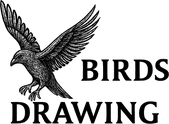 Birds Drawing Birds Drawing
Birds Drawing Birds Drawing

